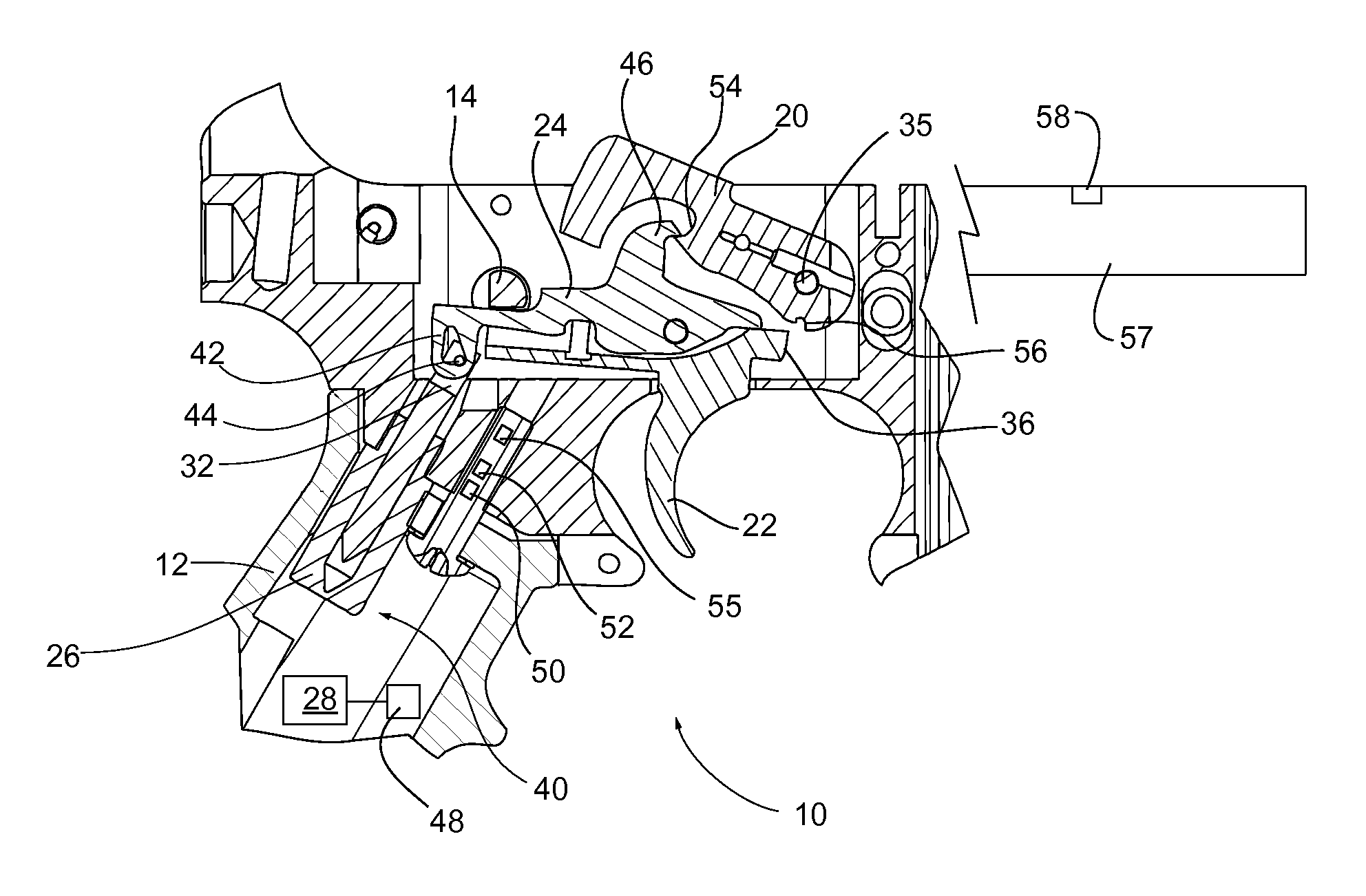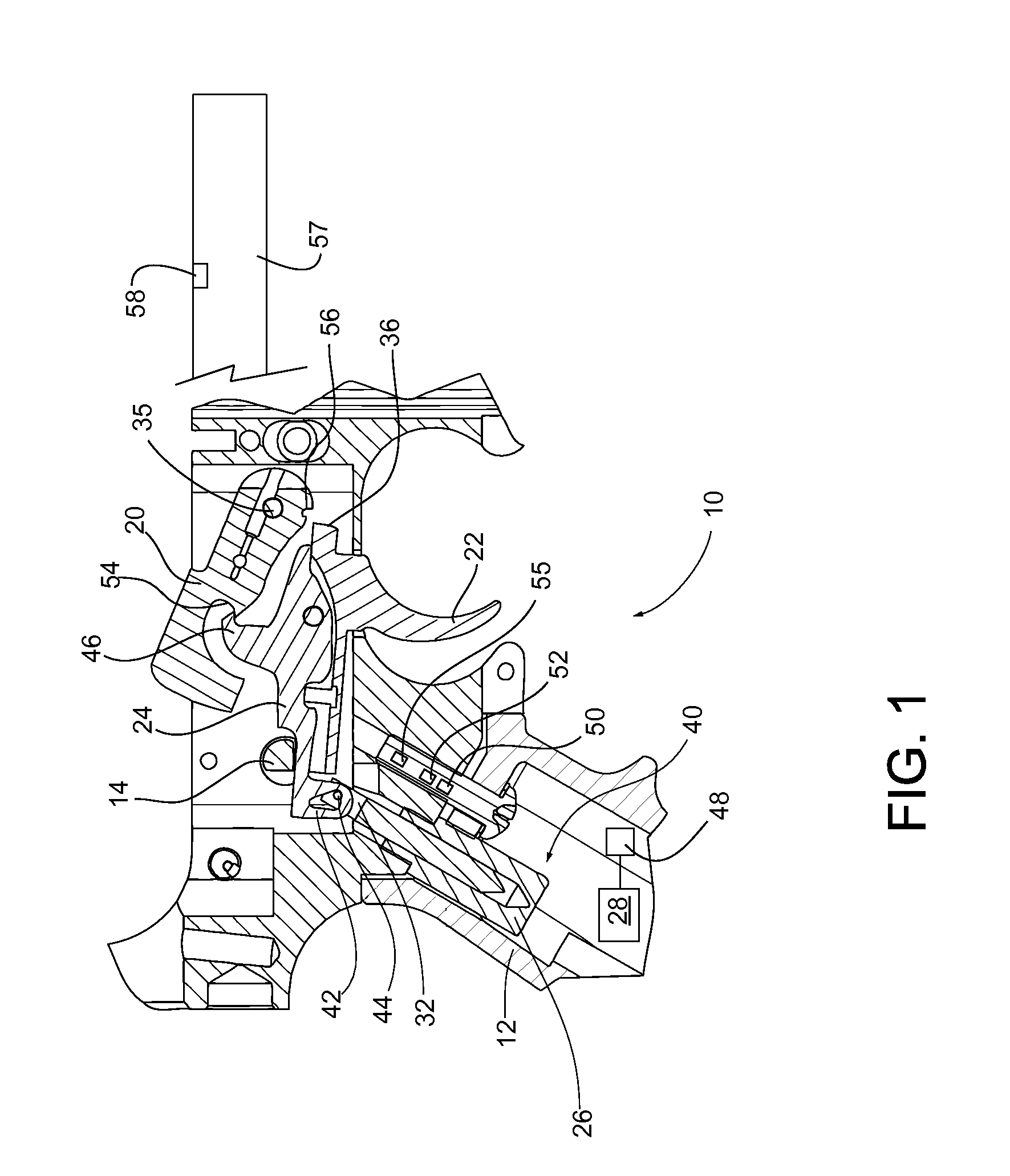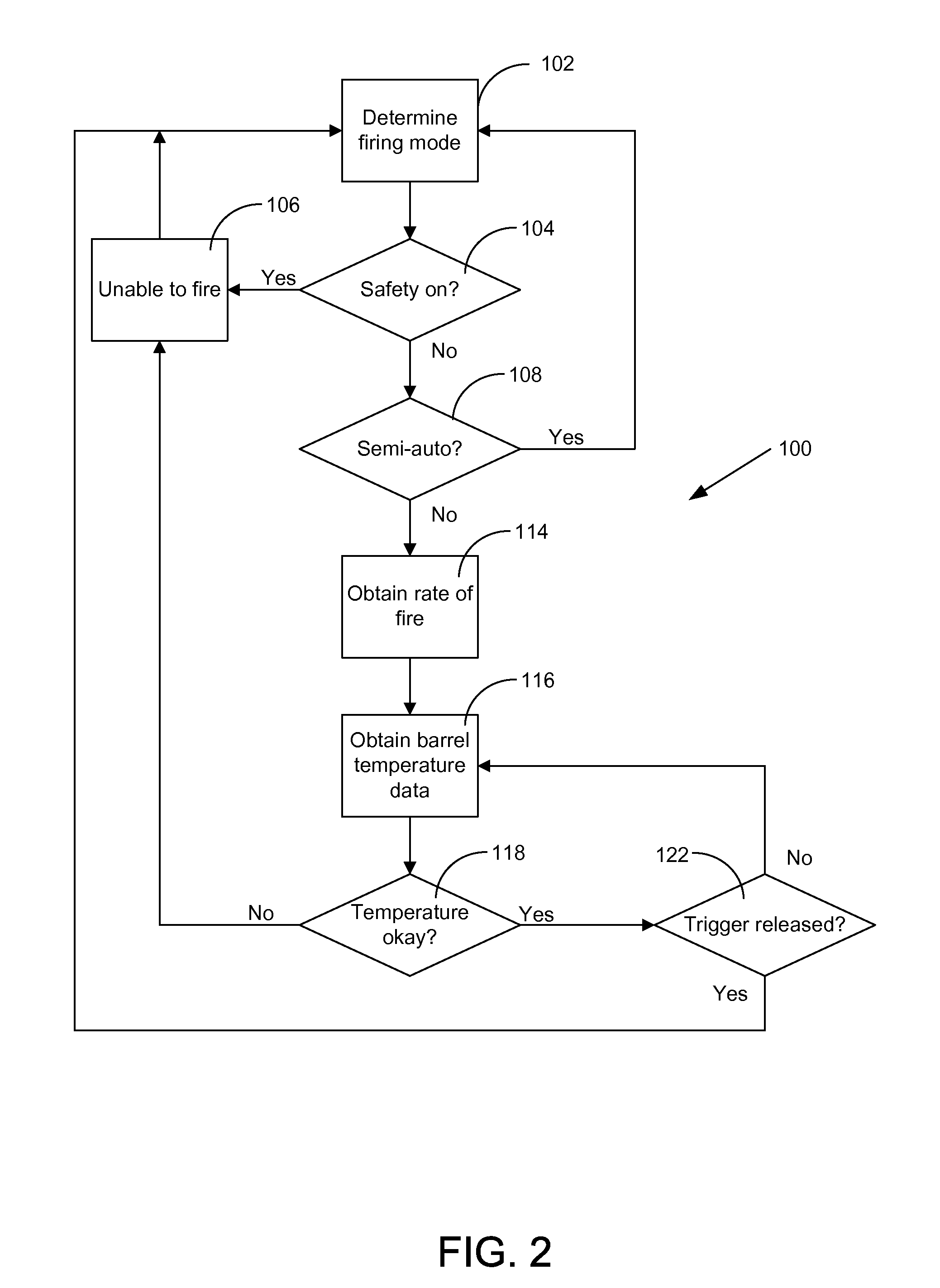Electro-mechanical firearm trigger mechanism
a trigger mechanism and electronic technology, applied in the field of electronic mechanical trigger mechanisms, can solve the problems of affecting the control and accuracy of the firearm, excessive firing rate in automatic firing mode, and high fire ra
- Summary
- Abstract
- Description
- Claims
- Application Information
AI Technical Summary
Benefits of technology
Problems solved by technology
Method used
Image
Examples
Embodiment Construction
[0012]In this disclosure, an embodiment of an electro-mechanical trigger mechanism and a method for using such a mechanism to control a firearm are disclosed. Embodiments of the invention may be applied to a wide variety of firearms, but is shown here in an embodiment with an automatic firearm, such as an AR-15, M16 or U.S. Pat. No. 3,045,555 (Stoner) type.
[0013]FIG. 1 shows a first cross sectional view of a firearm 10 incorporating an electro-mechanical trigger mechanism. In one embodiment the electro-mechanical trigger mechanism 40 resides within a hand grip 12.
[0014]The electro-mechanical trigger mechanism 40 comprises a solenoid 26 which is in communication with, and controlled by, a processor 28, such as a central processing unit (CPU) and is also connected to a hammer 20 and a trigger 22 via a sear disconnect 24.
[0015]A firing mode selector 14 provides an apparatus for switching operation of the firearm 10 between a safe mode, a semi-automatic mode, and an automatic mode as de...
PUM
 Login to View More
Login to View More Abstract
Description
Claims
Application Information
 Login to View More
Login to View More - R&D
- Intellectual Property
- Life Sciences
- Materials
- Tech Scout
- Unparalleled Data Quality
- Higher Quality Content
- 60% Fewer Hallucinations
Browse by: Latest US Patents, China's latest patents, Technical Efficacy Thesaurus, Application Domain, Technology Topic, Popular Technical Reports.
© 2025 PatSnap. All rights reserved.Legal|Privacy policy|Modern Slavery Act Transparency Statement|Sitemap|About US| Contact US: help@patsnap.com



